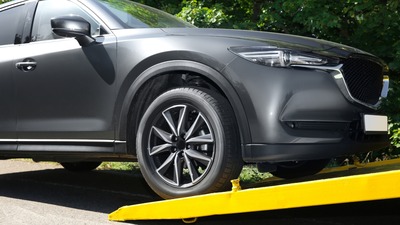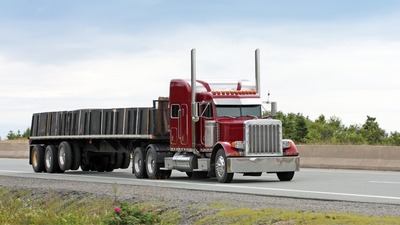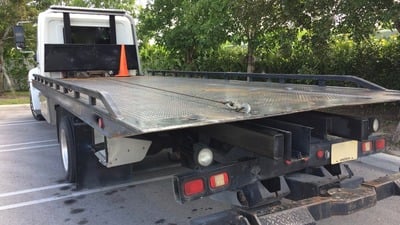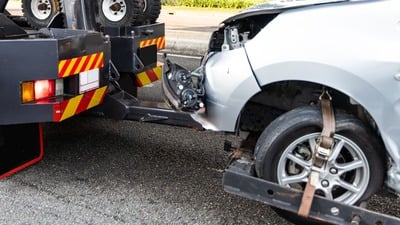Understanding Load Flags: Their Purpose in Towing Safety
In Detroit, like everywhere else, load flags are your blatant shoutout to fellow motorists that you're hauling something that can't fit within the confines of your vehicle. Whether you're moving furniture that sticks out of your truck bed or towing construction materials, these flags are essential for warning others about your oversized load. It's simple: red or orange flags catch drivers' eyes, signaling them to give you some space on the road. These flags must be at least 18 inches square to be sure they're visible to someone zipping behind or beside you. And it's not just a friendly suggestion; it's law. Ignore it, and you're not only risking an unwanted chat with the police but also putting everyone's safety in jeopardy. By keeping others informed with these bold tags, you help reduce the chances of an accident, ensuring everyone gets home without a scratch. So next time you load up and hit the road, slap those flags on—it’s towing safety 101.
The Legal Requirements for Load Flags in Detroit
When you're towing a load in Detroit, know that load flags aren't just a suggestion—they're the law. Michigan's Motor Vehicle Code dictates the use of red or orange fluorescent flags on any load that extends 4 feet or more beyond the rear of the vehicle. These flags must be visible for at least 500 feet to drivers approaching from any direction. Don't skimp on this; failing to display load flags can land you a fine, and worse, it can cause accidents. Stick to the rules, keep other drivers informed of your load's dimensions, and tow safe.
Identifying the Risks: What Happens When Load Flags Are Ignored?
Ignoring load flags when towing isn't just asking for trouble; it's practically sending an engraved invitation to it. You see, in Detroit, towing without proper load flags is a game of risk that plays with the safety of everyone on the road. Here's the deal: when you don't use load flags, other drivers can't easily see the ends of your cargo. This oversight can lead to horrific crashes, especially if parts of the load jut out from the vehicle. Also, think about the fines. Law enforcement in Detroit won't let it slide, and you could end up lighter in the wallet, paying hefty penalties. More importantly, without those flags waving as a warning, it's hard for drivers behind you to maintain a safe distance. At highway speeds, mere seconds matter. An unmarked load could mean someone misjudges the space needed to brake, and boom, you've got a pileup on your hands. Bottom line, skimping on load flags is not just about the law, it's about keeping yourself and your fellow Detroiters safe as you roll down the road.
Load Flags 101: Different Types and Their Specific Uses
Load flags aren't just a splash of color; they're safety signals. On Detroit roads, using the right type of load flag is not up for debate; it's law. Now, there are mainly two types: the red flag and the fluorescent orange-red flag. Red flags are for marking any protruding load. If you're hauling stuff that sticks out beyond your truck or trailer during daylight, you need a red flag. Square, at least 18 inches on each side, it screams, 'Hey, there's something sticking out here!' Then comes the fluorescent orange-red flag. This one's a hero in poor visibility, whether that's dusk, dawn, or foul weather. Load flags aren't mere accessories; they communicate vital info to fellow motorists, preventing mishaps on our bustling Detroit streets. Use them right, and you're not just following rules; you're keeping everyone, including yourself, safe.
How to Properly Secure Load Flags for Maximum Visibility
When you're towing something big, you want people to see it. In Detroit or anywhere else, sticking a bright flag on the end of your load can keep everyone safe. But don't just slap it on and go. Secure your flag right, so it stays put and stands out. Here's the drill: get an orange or red flag, the size should be at least 18 inches square. Tie it fierce but smart—on all four corners. Make sure it's hitched to the load's end, flapping free and clear. No sag, no drag. This flag is your safety shout-out. It's saying, "Hey, I've got something big here, watch out!" That's how you do it, how you keep the roads safe for everyone.
The Consequences of Improper Load Flag Use in Detroit
Not flying the right flags when hauling a big load on Detroit's streets? Big mistake. Here's the deal: skipping out on proper load flags is more than just a minor oops—it's a straight-up safety hazard. If your load extends beyond your vehicle, those red or orange flags are crucial. They signal to other drivers, "Hey, watch out, I'm carrying something hefty here!" But if those flags are missing or used wrong, you risk real trouble. We're talking accidents, damaged goods, and, yeah, hefty fines. Detroit doesn't play when it comes to road safety. So, remember, proper load flags could mean the difference between a smooth ride and a ride down to the police station—or worse, the hospital. Stay sharp, flag it right, and keep Detroit's roads safe.
Tips for Choosing the Right Load Flags for Your Towing Needs
When selecting load flags for towing in Detroit, here's what you need to know for a safe haul. First, color matters. Choose bright red or orange flags for visibility. They stand out, alerting folks your load extends beyond the trailer. Make sure the flags are clean and free of tears or rips. A damaged flag fools no one; it's safety on the line. Size counts too. Flags need to be big enough, at least 18 inches square, so people can't miss them. Smaller may be cute, but it won't cut it on the road. Material-wise, opt for durable fabrics. Polyester is your friend here, tough against wind and weather. Attach them securely to your load's widest points. A flapping flag is no good; it has to stay put to do its job – waving's for beauty queens, not load flags. Remember, safety is no joke. These tips are simple but critical – they make the difference between a smooth ride and a nasty day on the road. Choose well, stay conspicuous, and keep everyone on the roads around Detroit safe.
Educating Drivers: Best Practices in Load Flag Usage
When towing any bulky or oversized loads through Detroit's bustling streets, using load flags properly isn't just smart—it's the law. Let's make it easy to get right. First, know that red or orange flags are your go-to colors for visibility. These flags must be at least 18 inches square so drivers behind you can't miss them. Attach them securely to the end of anything sticking out beyond your vehicle's length. If you're moving at night, swap out flags for lights. You must ensure those lights are just as noticeable and comply with legal standards. Load flags aren't a suggestion, they keep everyone safe. So, use them every single trip, without fail. They're your signal to others that you're carrying extra and that they need to give you space. Remember, proper load flag use isn't about towing more; it's about towing smart.
Load Flags and Liability: How Proper Use Protects You Legally
When you're towing cargo that extends beyond the length or width of your vehicle, slapping on some bright red or orange load flags isn't just a friendly heads-up—it's the law in most states. Think of these flags as your shield; they tell other drivers, "Hey, watch out, I'm hauling more than meets the eye." But here's the real deal: if you skip the flags and there's a crash, you could be held responsible because you didn't warn others of the potential danger. It's like going into battle without armor and wondering why you got hurt. In Detroit, the law takes this seriously. You could face nasty fines, and if there's an accident, get ready for the possibility of legal battles that could hit your wallet hard. Do it right, keep it bright—that's the motto for load flags. It's not just about following the rules; it's about covering your bases to make sure you're not leaving yourself open to liability. This isn't fear-mongering—it's just straight talk. Use those load flags properly and drive confidently, knowing you've taken the steps to protect yourself and others on the road.
Summary: The Vital Role of Load Flags in Safeguarding Detroit's Roads
On Detroit's bustling streets, load flags are more than just colorful fabric; they're lifesavers. These flags signal to other drivers that there's something sticking out from your vehicle—way beyond your tail lights. Think long lumber, oversized equipment, you name it. Without these warning symbols, you're just an accident waiting to happen. Michigan law's clear on this: stick a red flag on any load that extends 4 feet or more from the rear of any vehicle during daylight, and for night, you better make that flag reflective or get some lights on it. Ignore this, and you're not just risking a fender bender; you're playing with lives and hefty fines. It's simple, really. Use load flags, make Detroit roads safer for everyone.





